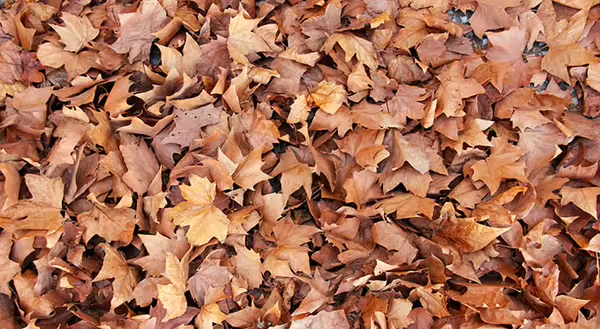
Now that we’ve had some cooler temperatures to go along with shorter days, we’re starting to see the leaves change colors. In the next few weeks, we can look forward to our landscapes being awash in yellows, oranges, and reds. As the saying goes, though, all good things must come to an end. Eventually, all of those leaves will end up on the ground, and we’ll begin our annual battle of what to do with them.
What to do with tree leaves in the fall?
Mow over a light layer of leaves
If you only have a light covering of leaves in your lawn, they can be mowed. It’s best to mow leaves when they are dry, so they don’t clump together and make it more difficult to mow. When mowing leaves, make sure you can see the grass beneath the cut-up leaves. If the leaf layer is too thick, it can smother and kill the grass.
By mowing the leaves and chopping them into small pieces, they will drop between the blades of grass to the soil surface. Once there, microbes can begin to break them down. As the leaves are broken down, they will contribute to the organic matter present in soils and nutrients will be released for turf to utilize.
Add leaves into garden beds
If you have too many leaves to mow, add them to your garden beds. Adding a 6 to 8-inch layer of leaves and incorporating them into garden soils by tilling can help improve them by increasing organic matter. In heavy clay soils, this will help with drainage and aeration, and in sandy soils, it will improve the soil’s ability to hold onto water and nutrients.
If you decide to incorporate leaves into garden beds, it's best to do this in the fall. This will allow for plenty of time for the leaves to break down before you plant in spring. Leaves have a high carbon-to-nitrogen ratio and can take a while to break down. If you want to speed up the decomposition process, add some fertilizer to the soil after the leaves have been incorporated.
Use leaves as mulch
Leaves can also be used as a mulch in vegetable gardens, flower beds, and around trees and shrubs.
A layer of mulch can be rather beneficial in our landscapes. It can help:
- Conserve soil moisture
- Moderate soil temperatures
- Prevent soil crusting and erosion
- Control weeds
- Contribute nutrients and organic matters to soils
When using leaves as mulch, it's a good idea to shred them first because leaves may clump together, forming a mat that can prevent moisture from reaching the soil. Shredded leaves are more likely to stay in place compared to unshredded leaves.
Use leaves to insulate plants
Leaves can be used to help insulate plants too. By using leaves as insulation, we can keep the soil uniformly cold and prevent freezing and thawing cycles that can damage marginally hardy plants, such as some hybrid tea roses, lavender, etc. This can be done by placing shredded leaves around the crowns of these plants, or wire frames can be built and filled with leaves. If using leaves as insulation, don’t put them on plants until temperatures are consistently below freezing.
Use leaves in composting
If you’ve ever done any composting, you know how valuable leaves can be as a 'brown' material. For the uninitiated, compost is a dark, crumbly, and earthy-smelling form of organic matter that has gone through a natural decomposition process. If you have a garden, lawn, trees, shrubs, or even planter boxes or houseplants, you have a use for compost. Explore a variety of Composting Resources on our website.
While we often dread the appearance of leaves in our yards, they are a valuable and free resource for our landscapes. Before you use up all of your leaves, take some time to make a big pile of them, and relive your childhood.
Good Growing Tip: While we’re often in a hurry to clean up leaves in the fall, they can be important overwintering areas for a variety of wildlife. Many different types of insects, such as butterflies and bees, as well as other animals such as salamanders and toads, will rely on leaf litter as habitat to make it through the winter. To conserve these animals consider leaving part of your yard as is until spring.
Signup for our emails! Want to get notified when new Good Growing posts are available? SIGN ME UP
MEET THE AUTHOR
Ken Johnson is a Horticulture Educator with University of Illinois Extension, serving Calhoun, Cass, Greene, Morgan, and Scott counties since 2013. Ken provides horticulture programming with an emphasis on fruit and vegetable production, pest management, and beneficial insects. Through his programming, he aims to increase backyard food production and foster a greater appreciation of insects.